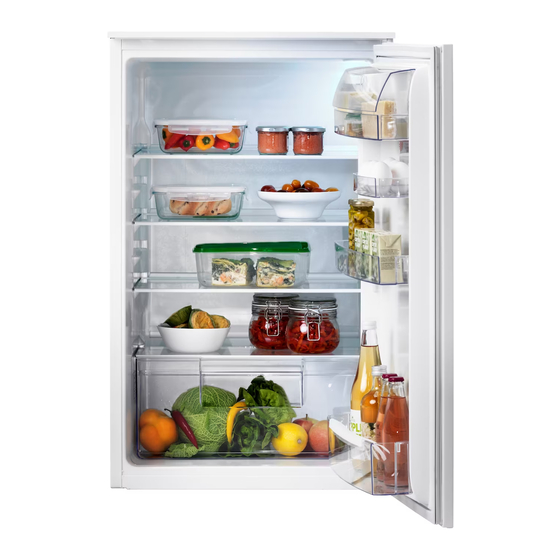IKEA SVALNA 사용자 설명서 - 페이지 11
{카테고리_이름} IKEA SVALNA에 대한 사용자 설명서을 온라인으로 검색하거나 PDF를 다운로드하세요. IKEA SVALNA 24 페이지. Ikea svalna refrigerator instruction manual
IKEA SVALNA에 대해서도 마찬가지입니다: 사용 설명서 (24 페이지), 매뉴얼 (40 페이지), 매뉴얼 (44 페이지), 매뉴얼 (44 페이지), 매뉴얼 (48 페이지)

ENGLISH
Positioning the door balconies
Hints and tips
Normal operating sounds
The following sounds are normal during
operation:
• A faint gurgling and bubbling sound
from coils sound when refrigerant is
pumped.
• A whirring and pulsating sound from the
compressor when refrigerant is pumped.
• A sudden cracking noise from inside
appliance caused by thermic dilatation
(a natural and not dangerous physical
phenomenon).
• A faint click noise from the temperature
regulator when the compressor switches
on or off.
Hints for energy saving
• Do not open the door frequently or leave
it open longer than absolutely necessary.
• If the ambient temperature is high and
the Temperature Regulator is set to low
temperature and the appliance is fully
loaded, the compressor may run
continuously, causing frost or ice on the
evaporator. If this happens, set the
Temperature Regulator toward warmer
settings to allow automatic defrosting
and so a saving in electricity
consumption.
The model is equipped with a sliding door
balcony which is fitted under a dairy
compartment and can be slid sideways.
For more thorough cleaning, the top and
bottom door balconies can be easily
removed and then refitted after cleaning.
Hints for fresh food refrigeration
To obtain the best performance:
• do not store warm food or evaporating
liquids in the refrigerator
• do cover or wrap the food, particularly if
it has a strong flavour
• position food so that air can circulate
freely around it
Hints for refrigeration
Useful hints:
• Meat (all types) : wrap in polythene
bags and place on the glass shelf above
the vegetable drawer.
• For safety, store in this way only one or
two days at the most.
• Cooked foods, cold dishes, etc..: these
should be covered and may be placed
on any shelf.
• Fruit and vegetables: these should be
thoroughly cleaned and placed in the
special drawer(s) provided.
• Butter and cheese: these should be
placed in special airtight containers or
wrapped in aluminium foil or polythene
bags to exclude as much air as possible.
• Bottles: these need a cap and should be
stored on the door bottle shelf, or (if
equipped) on the bottle rack.
11
